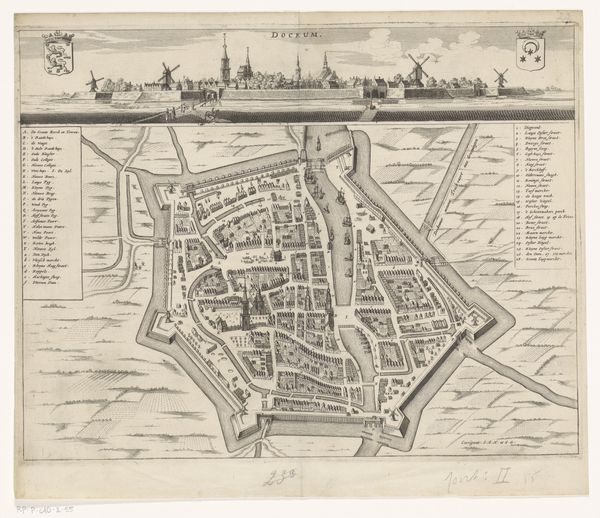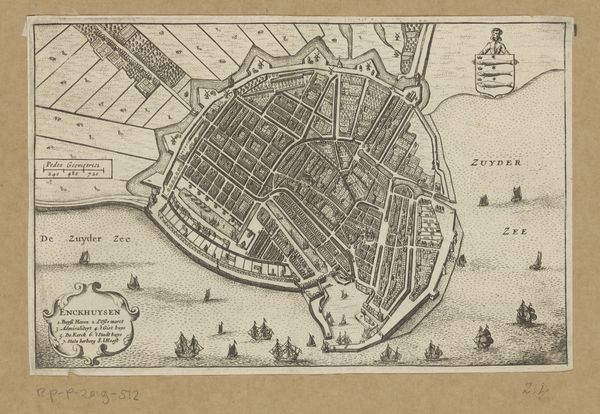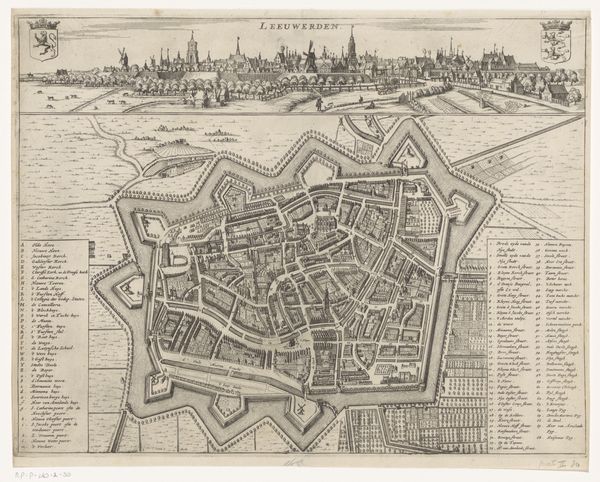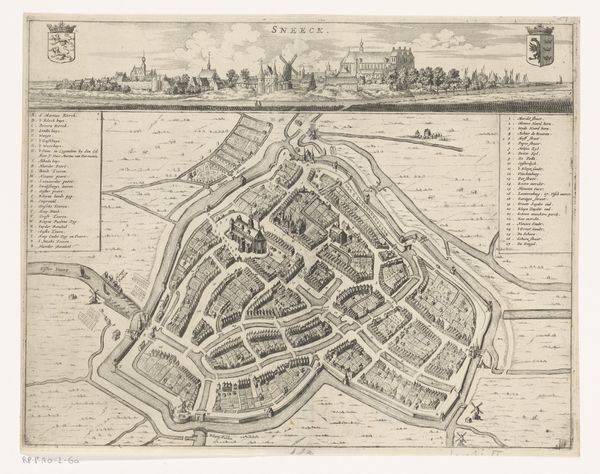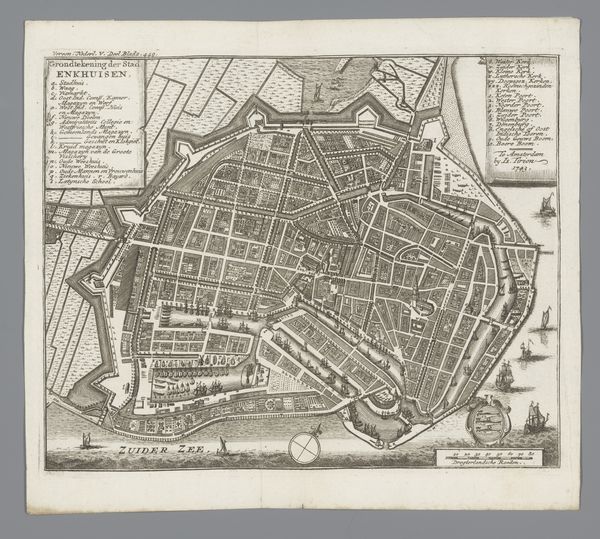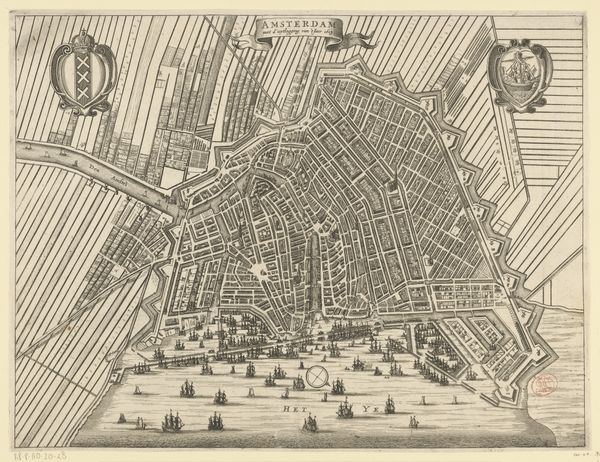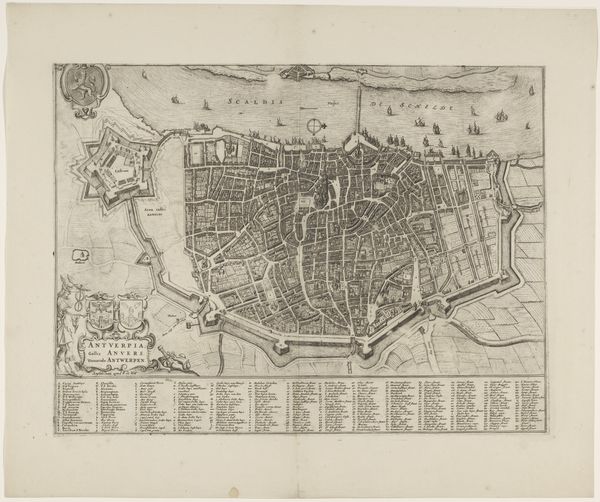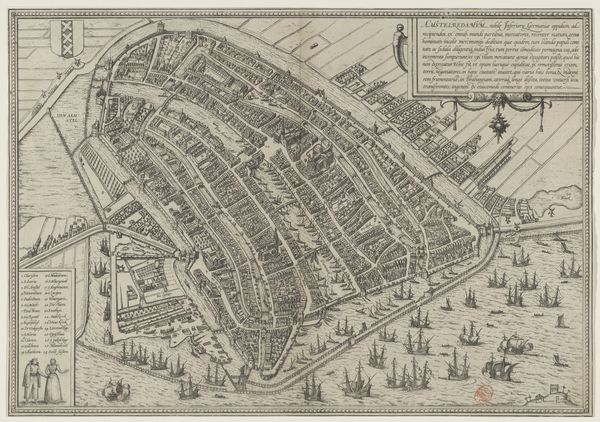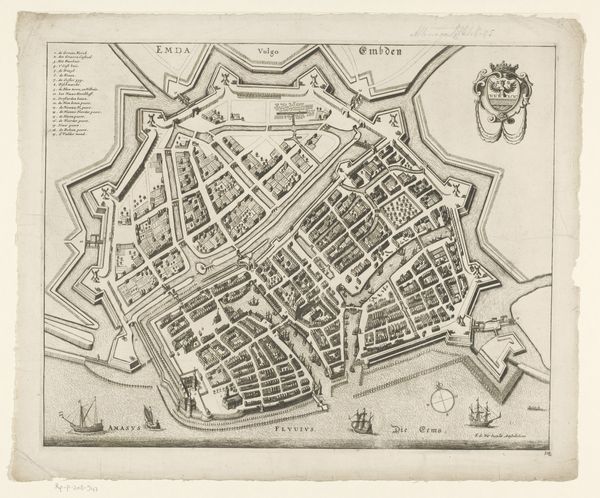
drawing, print, paper, ink, engraving
#
drawing
#
baroque
#
dutch-golden-age
# print
#
old engraving style
#
landscape
#
paper
#
ink
#
cityscape
#
engraving
Dimensions: height 299 mm, width 369 mm
Copyright: Rijks Museum: Open Domain
Curator: Here we have a “Plattegrond van Harlingen met stadsgezicht,” or “Plan of Harlingen with cityscape,” created by Jacob van Meurs in 1664. It’s an ink drawing and engraving printed on paper, showcasing the town of Harlingen during the Dutch Golden Age. Editor: It’s remarkably detailed, isn't it? You immediately sense the planned nature of the city. You get a real sense of the power that geometric forms could exercise over living space. Curator: Absolutely. What strikes me is how methodically the drawing has been produced, really documenting every element. I’m particularly interested in the relationship between artistic craft, geographical science and production technologies that underpinned these city views. I mean, consider the paper quality, the specific inks employed…it all speaks volumes about the artistic process and what Van Meurs considered essential for the success of his images. Editor: Agreed. But look at this from another perspective – the act of mapping itself! Who gets represented in this ‘objective’ view, and who gets left out? This wasn't just about making an aesthetically pleasing image of Harlingen; it was about power, about visualising and controlling space during the rise of Dutch maritime dominance. Curator: Good point! The cityscape emphasizes the economic might and naval prowess by showing windmills, boats, the architectural landmarks and a very clean composition with little human element. Also, the drawing’s linear construction with ink suggests precision in reproduction, fitting perfectly within printmaking trends of that time that made mass production of imagery possible. Editor: Exactly, you see how these seemingly straightforward cityscapes participate in a narrative of power. By rendering Harlingen in this particular way, Van Meurs is making a statement about Dutch authority, engineering capability and social order within that time, subtly excluding the experiences of marginalized communities whose labor actually powered that growth. How can we unpack what labor dynamics made such views and cartographies of power possible? Curator: True. Looking at it, now, you can understand how it represents not just a place, but a very specific vision. Its very specific visual order presents viewers from then, and now, to internalize values. Editor: I agree; looking beyond surface appearance lets us confront the complex dynamics of power at play during that historical era, challenging simplistic narratives by opening discussions of marginalisation with every meticulous stroke that makes up what Van Meurs put on paper. Curator: Thinking about that, you have given me some food for thought for other productions of city views that reproduced similar images, for they must also include underlying structures to them. Editor: Indeed, always so much more than what meets the eye!
Comments
No comments
Be the first to comment and join the conversation on the ultimate creative platform.
